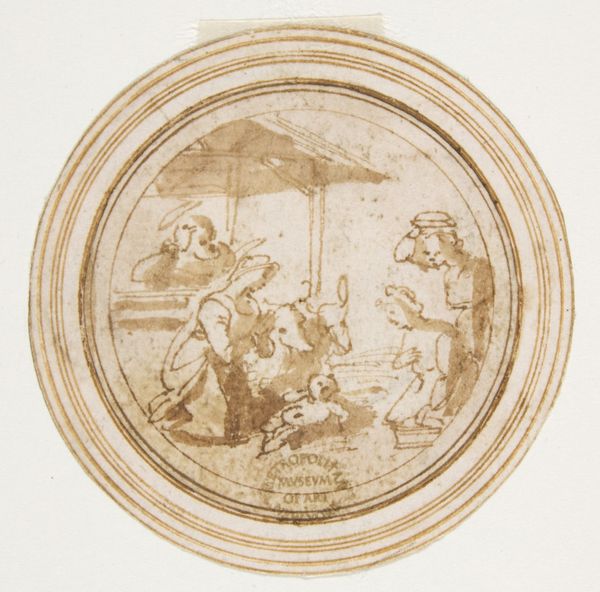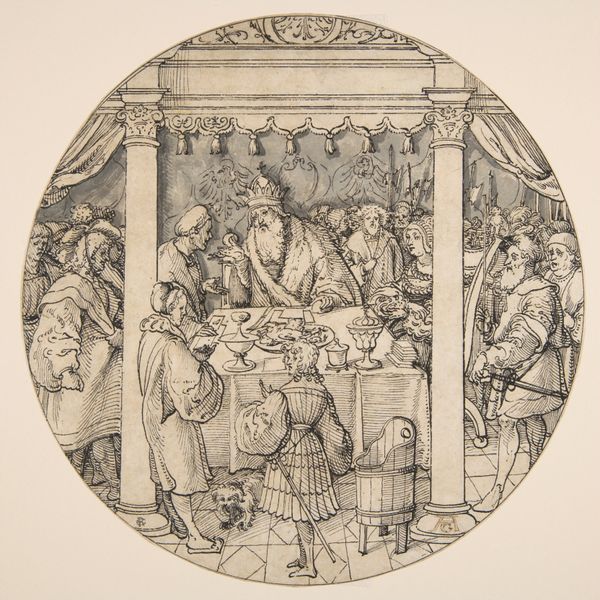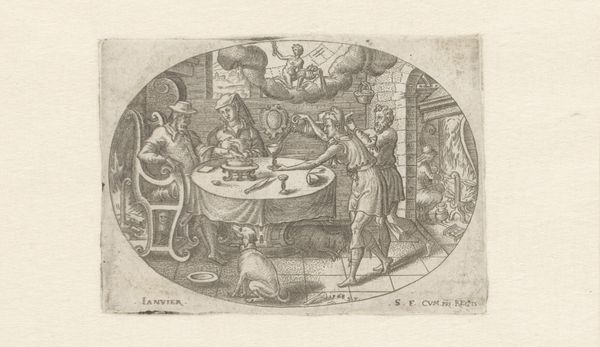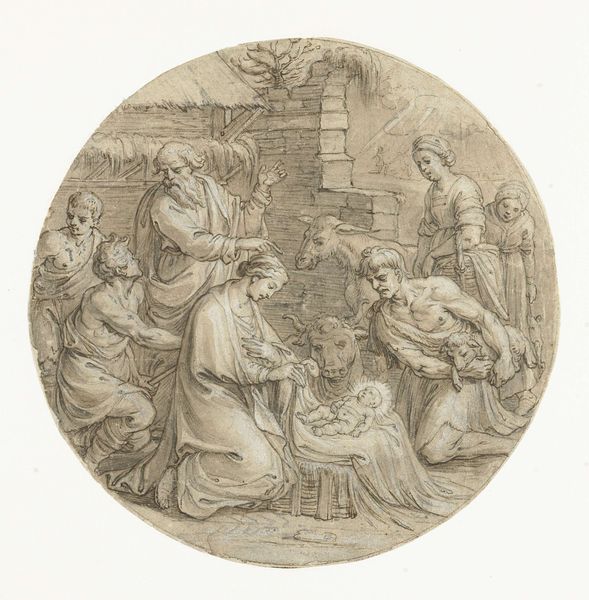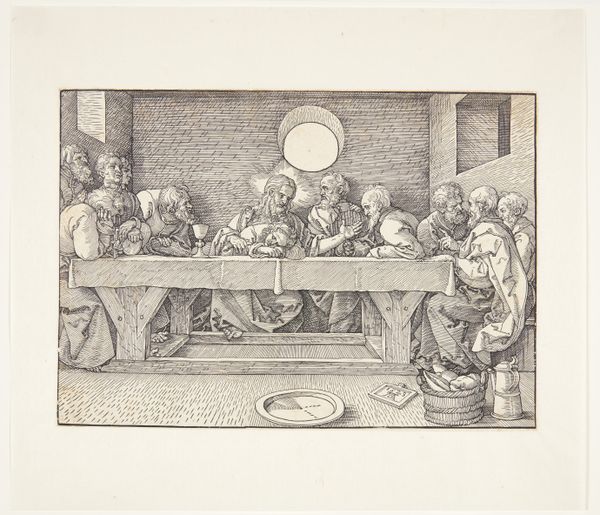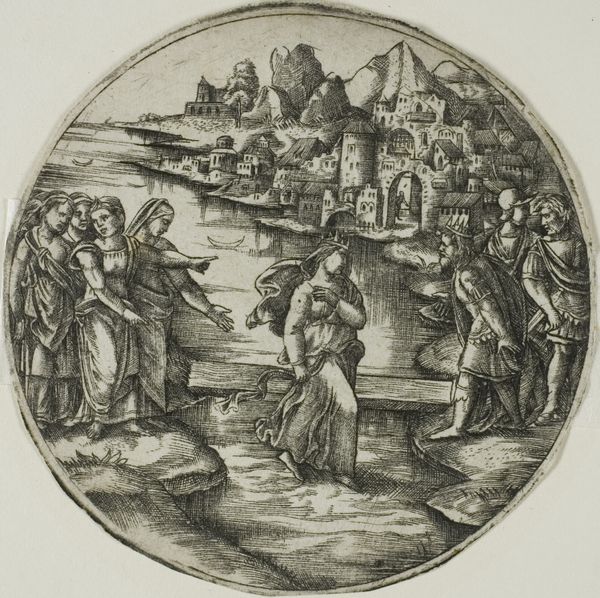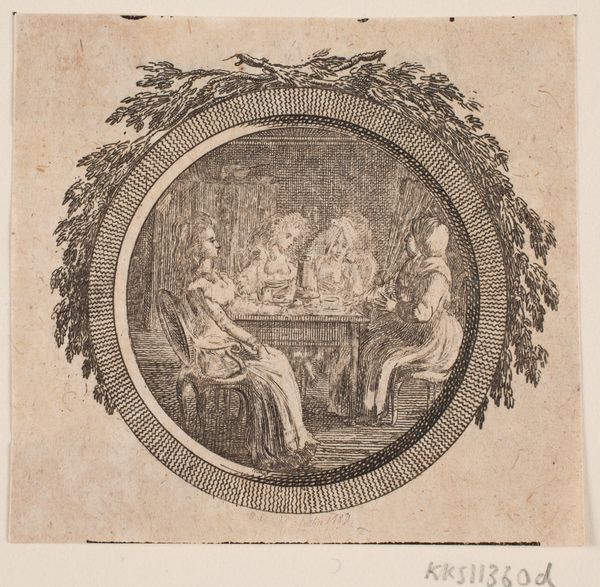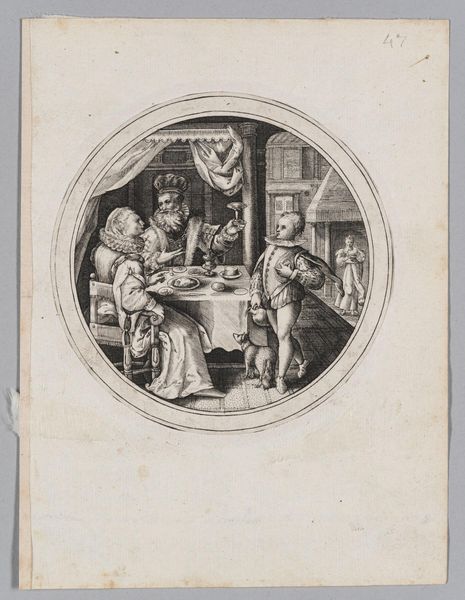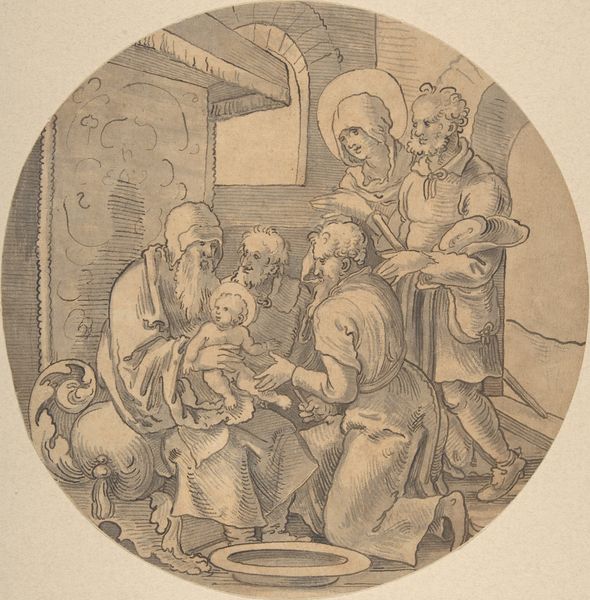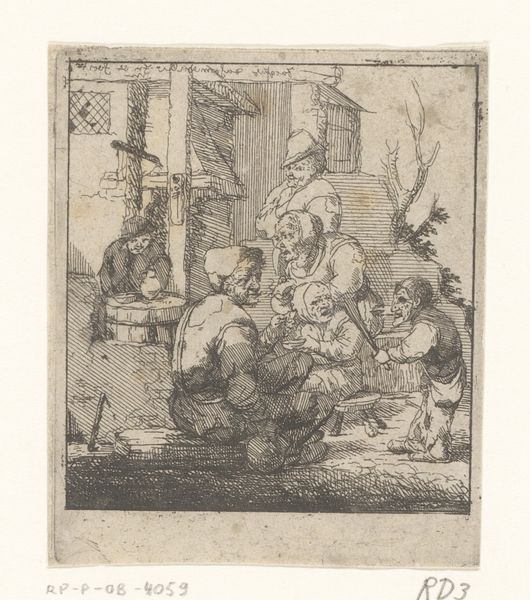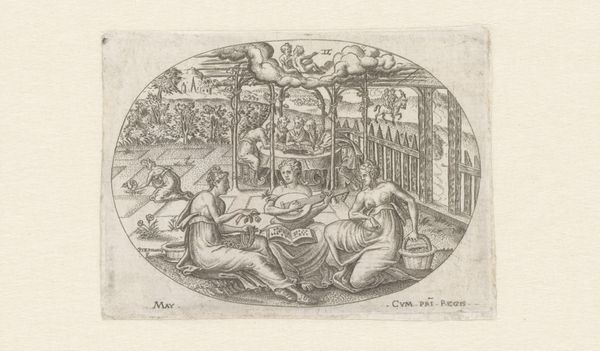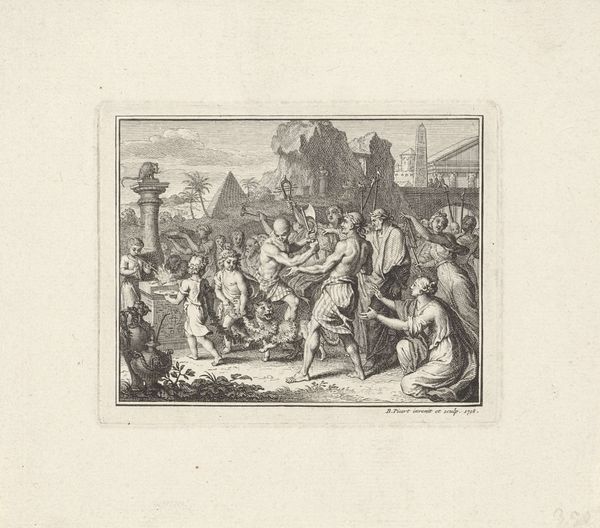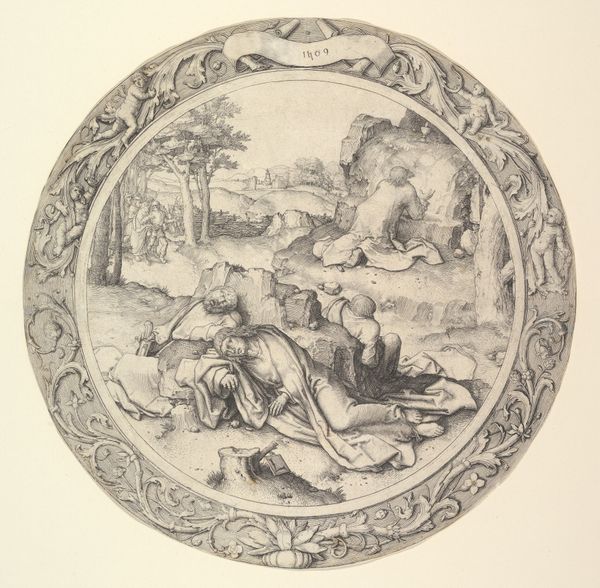
print, etching
#
baroque
# print
#
etching
#
figuration
#
genre-painting
#
history-painting
Copyright: Rijks Museum: Open Domain
Curator: Look at the hustle and bustle depicted in this print, etching to be exact. This is "Bruiloft te Kana" or "Wedding at Cana" by Dirck Strijcker, created sometime between 1601 and 1651, and preserved here at the Rijksmuseum. Editor: The energy just jumps out, doesn’t it? Even in this small format, there's an incredible sense of dynamism. So much activity swirling around this central table, a celebration captured with this busy and nervous line. Curator: Absolutely. Strijcker is engaging here with a pretty important subject, religiously of course: the Bible story of Jesus's first miracle where he turns water into wine during the wedding. What can be seen as quite poignant here, it must be said, it’s also just about a real, imagined place. Editor: It raises so many questions, about faith, yes, but also about gender roles in Dutch society at the time, and the dynamics between hosts and guests. Note the way the woman in the lower right, probably the host, is seated and dressed so luxuriously. The person pouring liquid at the left seems more urgent in its service! Curator: Exactly. And if you look at who's seated at the table—what their postures are, you know, what they appear to be doing and saying to each other - it really becomes less about the miracle of the wine and more about just depicting a well-to-do, privileged social scene of the time, of course centered around the miraculous figure, but equally so focusing on its guests. Editor: It brings up a thought: What does it mean for a story like the Wedding at Cana to be continually reproduced as art for centuries? The wedding serves as a symbol. Not just for devotion or faith, but as a site of class identity being reproduced, solidified even! This wasn’t just history, but part of constructing it. Curator: It’s about tradition, legacy, and also the role of imagery in reaffirming these things, particularly with respect to those that belong to positions of wealth, which indeed were often passed on by dynastic marriage in a social reality for much of European History. It also really is great craftsmanship with this tiny image, such complexity in these Baroque-style strokes. Editor: A good thing for us to reflect on then is how artworks operate not just as beautiful things, but also potent symbols in broader cultural power dynamics. Thank you Dirck, both for the complexity of artistry, and for opening avenues for critical inquiry!
Comments
No comments
Be the first to comment and join the conversation on the ultimate creative platform.
